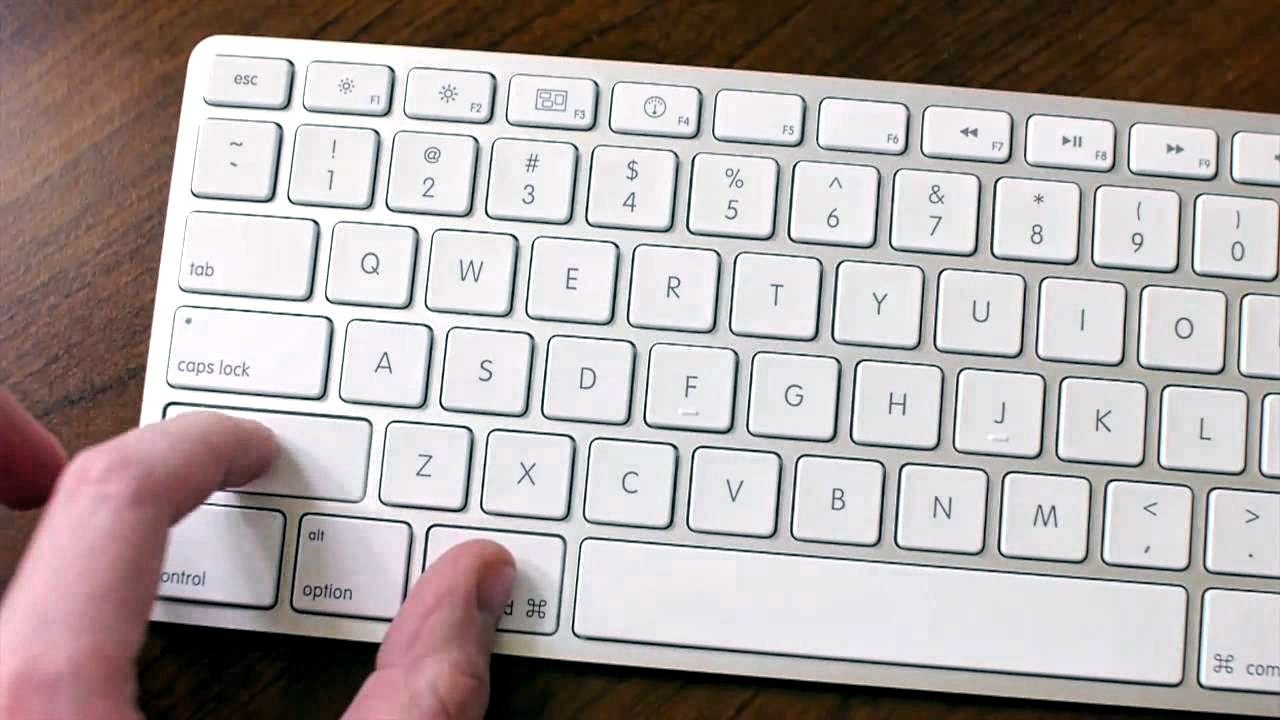For getting work done fast, it is very important that you are aware of all the ways that you can interact with your Mac. We have compiled a small list of keystrokes that you should definitely know about if you consider yourself a power user of Mac.
First, let’s begin with actions that you can perform with the Finder.
Important Actions:
| Open Sidebar item in a new Tab or Window | Cmd-Click |
| Switch Finder Views (Icon, list, column, cover flow) | Cmd-1, Cmd-2, Cmd-3, Cmd-4 |
| In List view, expand a folder | Right Arrow |
| In List view, collapse a folder | Left Arrow |
| Rename the selected file/folder | Press Return (or Enter) |
| Go into selected folder or open the selected file | Cmd-Down Arrow |
| Go to parent folder | Cmd-Up Arrow |
| Go Back | Cmd-[ |
| Go Forward | Cmd-] |
| Copy and Paste files | Cmd-C, then Cmd-V |
| Cut and Paste files | Cmd-C, then Cmd-Option–VOther actions |
| Move a file instead of copying | Cmd-Drag file to disk |
| Move selected files to the Trash | Cmd-Delete |
| Empty the Trash with warning | Cmd-Shift-Delete |
| Empty the Trash with no warning | Cmd-Opt-Shift-Delete |
| Undo the last action | Cmd-Z |
| Open Quick Look | Press the Spacebar (or Cmd-Y). On a trackpad can also tap with 3 fingers. |
App Switcher Shortcuts:
| Switch between 2 apps | Press Cmd-Tab to switch to last used app. |
| Switch between apps | Press Cmd-Tab & continue holding Cmd. While holding Cmd, to choose which app you want to switch to:
· Press Tab (multiple times as needed) to scroll right. · Press Tilde (~) or Shift-Tab to scroll left. · Press Left/Right Arrow keys. · Aim with the mouse. · Press End/Home key to go to first/last app.
|
| Quit an app in the app switcher | In the app switcher, you’re already holding Cmd, so hit Q to quit selected app. |
| Hide an app in the app switcher | In the app switcher, you’re already holding Cmd, so hit H to hide selected app. |
| Cancel the app switcher | In the app switcher, you’re already holding Cmd, so hit Esc or period (.) |
Shortcuts to Manage Windows & Dialogue Boxes:
| Switch to next window | Cmd-Tilde (~) |
| Switch to previous window | Cmd-Shift-Tilde(~) |
| Move a window in the background without switching to it. | Cmd-Drag on the window’s titlebar |
| Choose “Don’t Save” in a Dialog | Cmd-D in some apps or use Cmd-Delete |
Shortcuts to Interact Better With Dock:
| Hide all other applications | Command-Option click an App’s icon in Dock |
| Reveal a Dock item’s location in the Finder | Command-Click on the icon in the Dock |
| Force a file to open in a specific app | While dragging the file onto an app’s icon in the Dock, hold Command-Option |
| Move Dock to left, bottom, right side of screen | Hold Shift and drag Dock divider |
| Change the icon size of a stack | Cmd-plus or Cmd-minus |
| Temporarily turn magnification on/off | Hold Control-Shift |
| Force the Dock to only resize to non-interpolated icon sizes | Hold Option while dragging Dock separator |
Shortcuts For Interaction With Text:
| Go to end of line | Cmd-right arrow |
| Go to beginning of line | Cmd-left arrow |
| Go to end of all the text | Cmd-down arrow |
| Go to beginning of all the text | Cmd-up arrow |
| Go to end of current or next word | Option-right arrow |
| Go to beginning of current or previous word | Option-left arrow |
Screenshots:
| Take picture of the entire screen | Cmd-Shift-3 |
| Take picture of a selected area | Cmd-Shift-4 and Drag over an area |
| Take picture of a specific window/object | Cmd-Shift-4, then press Spacebar, then Click on the window/object |
Other Miscellaneous Keystrokes:
| Force Quit | Cmd-Opt-Esc |
| Change Terminal Directory to a specific folder | Cmd-Drag a folder onto the Terminal Window |
| Right-click using a Trackpad | Place 2 fingers on the trackpad and Click |
| Quickly find any menu item and launch it. | · Press Cmd-? which is Cmd-Shift-/
· In the Help menu Search that opens, start typing a few letters of your desired menu command. · Arrow key down to the item you want and press Return to choose it. |
| Turn off notifications | Option-click the Notification Center icon in menu bar to toggle notifications off/on |
| Change system volume in smaller increments | Hold Opt–Shift while changing volume |
| Move the Terminal cursor with the mouse | Option–click where you’d like the cursor |
Here we end this segment of Keystrokes that every Mac Power user should know off. These will definitely make your work much easier when you get used to them.





